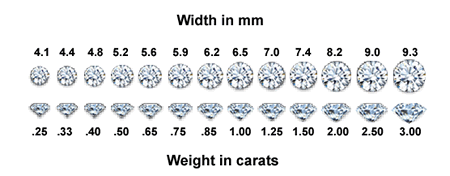Besides the conventional diamond shapes, there are some unique variety of geometrical shaped diamonds for those who love to explore the unexplored. Unusual shapes of diamonds come in a wide range and these can be converted into custom jewelry that is unique and exceptional. Below listed are a few forms of unconventional forms that one can expect.
- TABLET SHAPED DIAMONDS: In these the stone is cut in the form of a tablet, with three straight sides and one end curved. A popular example of this shape is the Ten Commandments diamond which is in the form of a tablet.
- TRIANGULAR SHAPED DIAMONDS: These diamonds resemble a prism and have a lot of brilliance. These can be used as solitaires and can also be inlaid in the metal for a simple yet elegant look.
- SHIELD SHAPED DIAMONDS: These stones are cut in the form of a shield used in battles as implied by the name.
- KITE SHAPED DIAMONDS: This is one of the oldest fancy diamond shape known. Its shape resembles a kite. The kite shaped diamond looks better as side stones of a major solitaire.
- KISSING SHAPED DIAMONDS: This is another very unusual shape of a diamond which still has to find its way in the market. As the name indicates, the single elongated stone is cut and shaped in a way that it resembles the shape of two lips in a kiss.
- HORSE HEAD SHAPED DIAMONDS: These diamonds are in the shape of a horse’s head. They carry exceptional details and high clarity which brings a lot of brilliance and make this shape extremely fascinating. This shape is most suitable for settings in pendants, ear rings and rings. It is a hot seller with horse lovers.
- BUDDHA SHAPED DIAMONDS: As is obvious from the name, this diamond resembles a meditating Buddha. It is completely handcrafted and sculpted out from one single round diamond. It is a three dimensional work of art and is associated with lot of charm, class and good luck. It has 56 facets and refracts light in all seven colors of the rainbow.
- CHRISTMAS SHAPED DIAMONDS: This diamond is shaped in the form of a Christmas tree. The single round diamond is cut in a triangular shape with roves to give it the shape of a pine tree. Though it is not very popular, such stones can make excellent festive jewelry and they are suitable for pendants and ear rings.
- HALF MOON SHAPED DIAMONDS: These stones are in the shape of a crescent. The stone is these are cut straight on one side while the other edge is rounded. Initially these diamonds were cut from broken or cracked round diamonds. Cutting half moon diamonds causes a lot of loss in diamond weight for getting proper brilliance.
- FLORAL SHAPED DIAMONDS: These are very popular and can be obtained either through a solitaire or by clustering small diamonds together. Flower shapes are obtained by using a combination of five fancy cut shapes. These are zinnia, marigold, Dahlia, fire rose and sunflower cut. Unconventional cutting angles are usually employed to obtain maximum brilliance for these diamonds.
- LEAF SHAPED DIAMONDS: Leaf shaped diamonds are yet another example of the diamond shapes inspired by the nature. Many small stones in this shape can be set together to give a resemblance of a leaf. Solitaires like the four leaf clover designs titled lucky leaf are quite prevalent in the designer's world too. The maple leaf is also very popular version.
- STAR SHAPED DIAMONDS: To give jewelry a festive look, diamonds can also be cut in the shape of a star. Larger diamonds are ideal for star shaped diamonds. They are popular for settings in pendants, bracelets, ear rings, brooch pins and finger rings.
- BUTTERFLY SHAPED DIAMONDS: This is beautiful shape that complements the natural beauty of diamonds. Butterfly shaped solitaires look very elegant. Diamonds in this shape can be complemented with other stones for maximum elegance.





